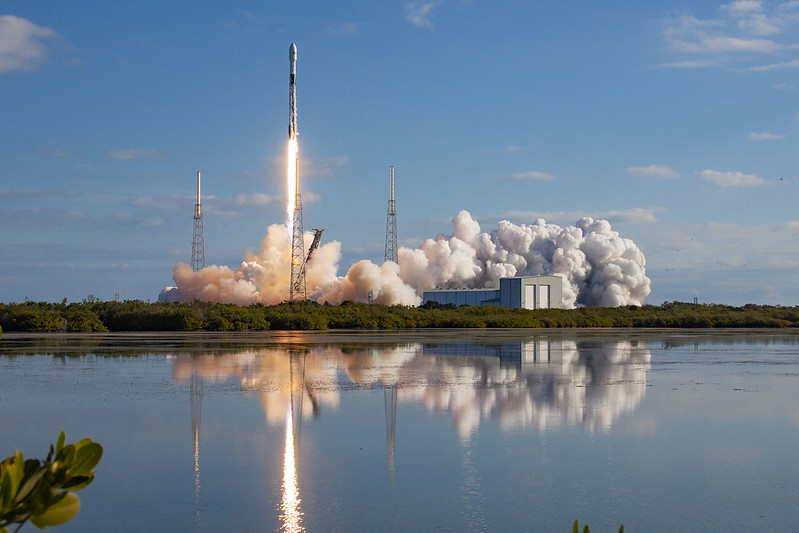
Two launches in three days. Behind the Black provides a tally that year-to-date launches are 6 for US companies, 3 for China, and 1 each for Arianespace, Russia, and Japan.
SpaceX launch of Dragon lifting 60 communication satellites
Watched the recorded video of SpaceX’s launch of 60 more Starlink satellites from this morning. This is the fifth launch in the Starlink mission. After the fourth launch there were 182 sat, with 2 on first launch and 60 on each followup launch. Sixty more on this launch brings the total in orbit to 242 by my count. Eventually the Starlink constellation will have 1,584 sats at a 341 mile altitude.
Video of the launch:
[youtube=https://youtu.be/8xeX62mLcf8]
Unusual item on this launch is the Falcon 9 booster was not recovered. It was the fourth time this specific booster had been used. This was the 50th attempt to recover a booster. Think of it – 49 successful recoveries.
At about the 8:44 mark in the above video, you can see the edge of what looks to be a splash to the right of the screen. The water cloud spreads and in a few moments drops of water hit the lens.
This batch was launched into direct elliptical orbit. In the next days and weeks each of the 60 satellites will fire their boosters and transition into a circular orbit. I don’t have a clue how any of this works, but the satellites will move apart from each other into correct position.
As an amazing commentary on how much SpaceX has made, the surprise on this launch was they did *not* recover the booster. Astounding.
Northrop Grumman launch of Antares lifting Cygnus resupply to International Space Station
Saturday (2/15), Northrop Grumman successfully launched a Cygnus resupply capsule to the ISS. The Antares rocket is powered by two Russian RD-181 engines. Second state engine is the Castor 30XL.
The Cygnus capsule is carrying 7,445 pounds of supplies and experiments to ISS.
There are four experiments loaded into Cygnus that will start after it separates from ISS on its descent into atmosphere where it burns up. After separation, two combustion tests will run to monitor how certain material burns inside a capsule. Then the pressure will be reduced and oxygen level increased to run two more burn tests. Those tests obviously can’t be conducted with astronauts on board or in a capsule that will be used for return.
So, the dangerous burn tests can be run with monitoring equipment recorded every moment of every aspect the intentional fires. Sounds like a brilliant experiment to my little accountant brain.
For lots more info on the flight, check out Spaceflight Now, 2/15/20, Antares rocket lifts off from Virginia on space station cargo mission.
I’m seeking permission for photos of Antares and Cygnus. Hope to add some nice pix soon.